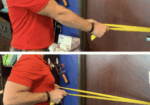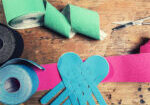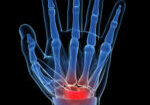What are the minimally important changes of four commonly used patient-reported outcome measures for 36 hand and wrist condition-treatment combinations
Filed under Uncategorized

Article Review By: Case Peters
Reference
Hoogendam, L., Koopman, J.E., van Kooj, Y.E., Feitz, R., Hundepool, C.A., Zhou, C. … The Hand Wrist Study Group (2021) What are the minimally important changes of four commonly used patient-reported outcome measures for 36 hand and wrist condition-treatment combinations. Clinical Orthopaedics and Related Research. epub ahead of print. doi: 10.1097/CORR.0000000000002094.
The Skinny
Prior research has shown that the minimal clinically important difference (MCID) for several patient-reported outcome measures (PROMS) / hand therapy outcome measures can vary greatly depending on the patient’s condition and the treatment provided. This article sets out to establish the MCID for several commonly-used PROMS for a variety of hand and wrist conditions.
In the Weeds
The authors establish two primary questions: 1) What are the MCIDs for some of the most frequently used PROMS for common condition-treatment combinations in the hand/wrist; 2) Does the MCID vary depending on the invasiveness of treatment (i.e. surgical vs. conservative management).
The authors reviewed a database of 23,749 patients with 22 different hand and wrist conditions treated with a spectrum of nonsurgical, minor surgical, and major surgical interventions. The MCID scores were established for 36 condition-treatment combinations. The MCIDs for the surgical and non-surgical group were compared with a Wilcoxon signed rank test to determine if there was a difference between surgical and nonsurgical treatment.
Outcome Measures
| Patient-Reported Outcome Measure | Subscales | Included Conditions |
| Pain Visual Analogue Scale (0-100) | Pain at rest Pain with load Average pain | All |
| Hand Function: Visual Analogue Scale (0-100) | None | All |
| Michigan Hand outcomes Questionnaire (0-100) | Hand function score Work score ADL score Pain score Aesthetics score Satisfaction score | Finger and Thumb conditionsCMC OA, Trigger Finger, etc. |
| Patient-rated Wrist/Hand Evaluation (0-100) | Pain score function score | Wrist conditions, Midcarpal Instability, etc. |
| Boston Carpal Tunnel Questionnaire (1-5) | Symptom severity scale functional status scale | Nerve conditions Carpal tunnelCubital tunnel |
Bringing it home
The MCID is an important measure of clinical significance. It helps give us insight into the smallest level of change in a treatment outcome that a patient would identify as important.
The authors conclude that the MCID varies depending on the condition and the invasiveness of the procedure. In general, MCID values for nonsurgical treatment were approximately 1/9th of the scale, while MCID values for surgical treatment were approximately 1/5th of the scale. Patients receiving more invasive treatment more likely have higher treatment expectations may be in more discomfort or may feel that the return on investment from a more invasive treatment should yield a greater improvement
Rating (0-5 rating scale):
Rating is 4/5. The standard caveats and limitations apply for any retrospective, non-randomized controlled trial. However, the researchers were very thorough and transparent in their methodology and were forthcoming about the potential limitations of this work. Establishing these condition-treatment-specific MCID values can help clinicians with goal-writing, setting patient expectations, and understanding the patient perception of what constitutes a beneficial treatment.
The authors have also created a free online tool to share their results that anyone can access. Clinicians can use this resource to quickly review the MCID values for any condition-treatment combinations relevant to their practice. Access it below.
Minimal Important Change for multiple PROMS and treatments for hand and wrist disorders
More To Read
Increase Shoulder Range by Improving Scapulohumeral Rhythm
Scapulohumeral rhythm is often the key component when treating shoulder conditions and the lack of total shoulder range of motion. This may also be a critical component to prevent shoulder conditions during the rehabilitation of other upper extremity conditions such as distal radius fractures, tendon injuries, and elbow injuries. Scapulohumeral rhythm is the rhythm in…
Read MoreHow to use Kinesiology Taping for Shoulder Subluxation
How to us Kinesiology Tape for Shoulder Subluxation By: Tayler Roost What is shoulder subluxation? Shoulder subluxation is a dislocation of the glenohumeral joint. This can be classified as traumatic, non-traumatic, or neurological. A traumatic shoulder subluxation can be caused by contact sports or repetitive shoulder movements. A non-traumatic shoulder subluxation can be caused indirectly…
Read MoreCarpal tunnel syndrome and its association with body mass index, wrist ratio, wrist to palm ratio, and shape index
A literature review of carpal tunnel syndrome and its association with body mass index, wrist ratio, wrist to palm ratio, and shape index Madani, A. M., Gari, B. S., Zahrani, E. M. A., Al-Jamea, L. H., & Woodman, A. (2022). A literature review of carpal tunnel syndrome and its association with body mass index, wrist…
Read MoreHandlebar Palsy also known as Ulnar Nerve Compression
Handlebar Palsy also known as Ulnar Nerve Compression Handlebar palsy, also known as ulnar nerve compression, is a condition commonly experienced by cyclists due to prolonged pressure on the ulnar nerve at the wrist in an area called Guyon’s Canal. This pressure can occur from putting pressure on the handlebars or gripping the handlebars tightly. …
Read MoreSign-up to Get Updates Straight to Your Inbox!
Sign up with us and we will send you regular blog posts on everything hand therapy, notices every time we upload new videos and tutorials, along with handout, protocols, and other useful information.






